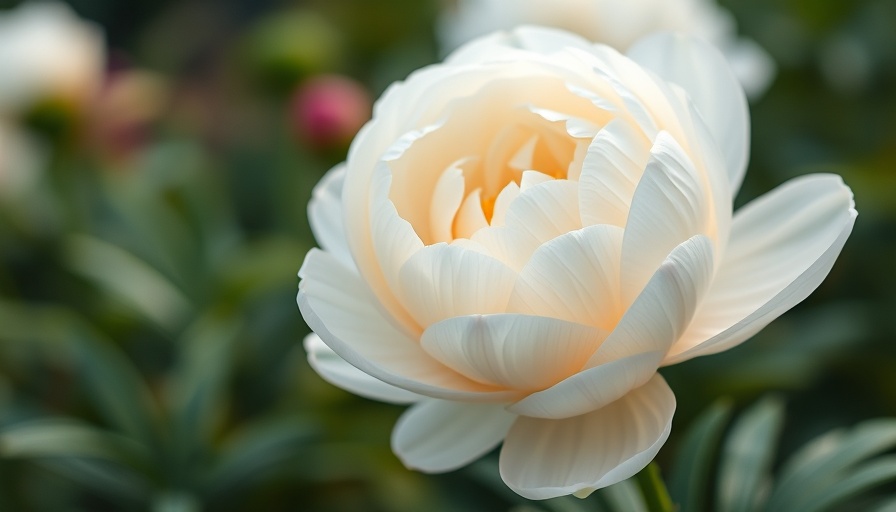
Discovering the Beauty of Peony Flowers
If you’ve ever wandered through a garden in spring, you may have been captivated by the glorious blooms of peonies, known scientifically as Paeonia spp.. These perennial favorites are not only a staple of cottage gardens but also symbolize prosperity and good fortune in many cultures. With their big, fluffy flowers coming in an array of colors—pink, purple, red, white, and even yellow—peonies offer a stunning aesthetic that can brighten any landscape.
Types of Peonies: A Detailed Breakdown
To understand the allure of peonies, it's crucial to explore their categories. The Paeonia genus can be divided into three main sections:
- Onaepia: This section includes two species native to North America, often less common in cultivation.
- Moutan: Comprising tree species from China, these peonies offer unique growth habits and characteristics.
- Paeoniae: This catch-all includes the herbaceous species mainly found in Asia and Europe.
While wild North American peonies are rare in gardens, both tree and herbaceous types are extensively cultivated and cherished by gardeners. Knowing the different categories helps homeowners select the best peonies for their garden environment.
The Growth Habits of Peonies: What You Should Know
Peonies thrive in USDA Hardiness Zones 3 to 8 and can be classified based on their growth habits into three main categories:
- Herbaceous: These soft-stemmed peonies go dormant in winter but return each spring. They are popular among gardeners for their vibrant blooms.
- Tree: Grown for their majestic stature and blooms, tree peonies can reach impressive heights and often have more complex petal structures.
- Intersectional: A hybrid variety that combines traits from both herbaceous and tree peonies, offering the best of both worlds.
Understanding these categories is essential for selecting peonies that suit your garden's specific conditions and your personal aesthetic preferences.
Petal Characteristics: An Array of Choices
One of the most fascinating aspects of peonies is their petal characteristics. Peony flowers can be:
- Single: Featuring one layer of petals, they are the simplest in form but can be very graceful.
- Semi-double: These have two layers of petals that create a fuller appearance but are still not too overwhelming.
- Double: With multiple layers of petals, double peonies are the showstoppers, bursting with blooms that create a spectacle in any garden setting.
Some varieties even exhibit stunning two-toned effects or exquisite fragrances that can make your garden experience even richer.
Choosing Varieties: Tips and Suggestions
When it comes to selecting peony varieties to grow, it's important to consider both their beauty and hardiness. Popular choices include:
- P. lactiflora: Known as the common peony, it has an array of cultivated varieties, making it a versatile choice for most gardens.
- P. tenuifolia: Also known as fern-leaf peony, it is valued for its fine, feathery leaves and charming low-growing habit.
- P. obovata: This woodland species thrives in shaded conditions, perfect for beauty tucked away in lesser-sunny spots.
Whatever your garden conditions, there is likely a variety of peony suited to your design, and incorporating them into your plan can enhance your garden’s seasonal beauty.
The Benefits of Growing Peonies in Your Garden
In addition to their visual beauty, peonies come with many benefits for the gardener:
- Pest-Resistant: Many peony varieties are resistant to pests, reducing the need for chemical interventions.
- Low Maintenance: Once established, they require minimal care, making them perfect for busy individuals or beginners.
- Longevity: Peonies can last a lifetime, often blooming for years, which encourages long-term planning in your garden.
By selecting the right types and varieties, gardeners can create not only a beautiful visual display but also a healthy ecosystem that supports local wildlife and encourages pollinators.
A Pathway to Sustainable Living Through Gardening
As with many gardening endeavors, embracing the art of peony cultivation connects individuals to the rhythm of nature, promotes well-being, and encourages community connections through shared gardening experiences. By finding joy in planting, nurturing, and eventually enjoying the blooms, gardeners embark on a profound journey of self-discovery and fulfillment.
Take Action Today: Add peonies to your home garden, celebrate their beauty, and enjoy the bountiful blooms that spring brings each year. Consider joining local gardening clubs or communities online to share experiences and tips on growing these wonderful plants.
 Add Row
Add Row  Add
Add 




 Add Row
Add Row  Add
Add 

Write A Comment